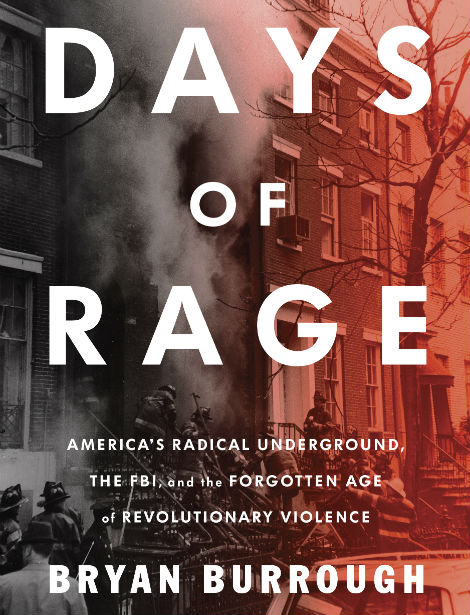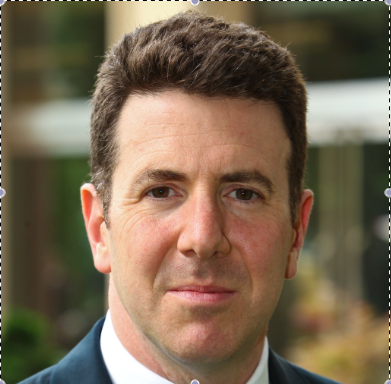Days of Rage in the 1970s: America's Homegrown, Violent, Bomb-Setting Radical Underground
By Bryan Burrough
Penguin Random House (2015)

Published by The Lawfare Institute
in Cooperation With

By Bryan Burrough
Penguin Random House (2015)
America’s homegrown “revolutionary” groups of the 1970s might have set some kind of record for the journey from idealism to farce. The hodgepodge of self-proclaimed leftist revolutionaries who flourished in that low dishonest decade did succeed in setting off hundreds of bombs, and certainly they endlessly denounced “the system.” But their lasting accomplishments, as Bryan Burrough details in his excellent and often amusing book Days of Rage: America's Radical Underground, the FBI, and the Forgotten Age of Revolutionary Violence, were limited to “the spread of metal detectors and guard dogs.”
Days of Rage chronicles the trials and tribulations, the rise and fall, of the Black Liberation Army (BLA); the Fuerzas Armadas de Liberación Nacional (FALN) which sought Puerto Rican independence; the Symbionese Liberation Army of Patty Hearst fame; the Weathermen (renamed the Weather Underground after members deemed the original name sexist); and more obscure (but often far more deadly) groups like the New World Liberation Front. Burrough (longtime Vanity Fair correspondent and book author) has conducted extensive interviews with still-living participants in these groups and those in law enforcement pursuing them, as well as extensive library research. One of his observations is that these groups often aided and abetted one another, and their ideas, ideologies, and bomb-making tactics flowed freely among them.
Oppression of minorities, especially African Americans, was at the heart of both the era’s broader radical social movement as well as these self-declared revolutionary groups. Even white middle-class groups like the Weather Underground, which sprang from the leaders of the anti-Vietnam war movement and its flagship organization, the Students for a Democratic Society (SDS), saw fighting racial injustice as the cornerstone of their struggle. Opposition to the war served instrumentally to attract new followers, but at the movement’s core was solidarity with oppressed minorities. Some groups like the BLA or the FALN drew members directly from minority communities. The more pathetic ones like the Symbionese Liberation Army, which wanted to abolish prisons, marriage, and rent and opposed “racism, sexism, ageism, capitalism, fascism, individualism, possessiveness, competiveness and [insert evil here],” simply wanted to be revolutionaries—the cause seems almost incidental. Burrough also explores the bizarre alliance between charismatic black inmates and adoring white radicals that was manifest in many later groups.
We often know the most about the least dangerous groups. Burrough points out that both FALN and BLA were tight-lipped about the group’s history and continue to be to this day. Yet these groups were far more murderous than the better-known Weather Underground. The BLA’s cop-killing campaign was painfully successful, but the media, Burrough writes, wasn’t interested or focused on groups like the Weather Underground:
To the press, at least, poorly educated, self-proclaimed black guerrillas who murdered policemen were not credible revolutionaries. But self-proclaimed white guerrillas from good schools who bombed vacant buildings were.
Those looking for terrorism and counterterrorism parallels and lessons today will find some, though to his credit Burrough focuses on the history of these groups and doesn’t beat hard on this drum. As is true for some groups today, the number of active revolutionaries during this period was small, and a few people could change a group’s direction and capabilities. The Weather Underground, for example, became far more dangerous when Ron Fliegleman, a skilled bomb maker, joined the group.
Prisons over time came to play an important role, with radicalized inmates often emerging as revolutionary leaders – a problem we’ve seen today with jihadists in Europe. Then as now, groups rewrote their own histories. The Weather Underground initially embraced the call to kill cops even though Weather Underground leader Bill Ayres later claimed he only wanted “responsible” (i.e., symbolic) terrorism during his time underground. (Burrough has some fun repeatedly pointing out where Ayres lies about the group’s history.)
Leaderless terrorism worked as well then as it does today. The BLA, for example, embraced a leaderless approach in the hope, often justified, of frustrating law enforcement. Burrough notes, however, that while this “sounded fine in theory; in practice it led to anarchy.” One member recalls two cells showing up to rob the same bank. Similarly, terrorists do better when tied to broader social movements that can provide new recruits and hiding places, among other things. The Weather Underground’s leaders eventually recognized that dissolving the SDS was a huge mistake, as they lost their base and networks.
But perhaps the biggest parallels between then and now are those hardest for outsiders to observe: the pathologies, rivalries, and plain craziness within the various groups and broader movements. Jealousy and envy create divisions despite rhetoric of brotherhood. Machismo flows thickly, and foolish operations go forward because sensible voices are shouted down as cowards. Cocaine corrupts one of the BLA splinter groups as an addict leader steals money and sells guns to pay for his habit. (#ProTip, kids: Orgies might, as the Weather Underground’s leaders believed, encourage cohesion among revolutionary cadre. But they are even more successful when you remember basic hygiene … one radical recalls his revulsion watching a louse crawl around his partner’s face.)
The government’s counterterrorism responses, for their own part, suffered from the time-honored oscillation between passivity and overreaction. When the bombings first began, the FBI was surprised, and their lack of actionable intelligence often lead them to bend or even break the law—actions that later rebounded on the FBI and diminished its reputation further. They often thought the enemy strong and numerous when in reality it was weak and unable to muster broader support. Even disasters like the accidental explosion that destroyed a Weather Underground lab was seen as a sign of strength. At times the FBI looks like the Keystone Cops: Weather Underground leaders Bernadine Dorhn and Jeff Jones showed up unexpectedly when the FBI was staking out a money pickup. They escaped, however, in part because FBI protocol decreed that a Special Agent in Charge must be present when a Top Ten Most Wanted suspect is apprehended, and agents hesitated to act.
Perhaps most disturbing about the picture Burrough paints is not the deranged actions of a few pathetic revolutionaries, but the reaction of the broader society. Burrough’s book offers us an uncomfortable reminder of the cultural nadir that was the 1970s. For a brief time, the Weather Underground’s bombings and ideas of violent revolution were taken seriously by the broader left and were seen as a “semi-legitimate response to Nixon-era policies.” In New York, Puerto Rican radicals turned a Bronx hospital into a haven, disseminating public health literature—paid for by the city, of course—that claimed that engaging in armed revolution helps cure heroin addiction. It’s hard to imagine the leading newspapers today lauding a book like Eldridge Cleaver’s Soul on Ice, which extolled mass rape as a form of minority empowerment--but that’s exactly what happened after it was published in 1968. Weather Underground leader Bill Ayres and a colleague combed through the writings of George Jackson on his prison years; the result, Soledad Brother, got rave reviews. Ayres had managed to portray Jackson as an American Dreyfus, while conveniently omitting some of his impolitic dreams like poisoning Chicago’s water supply.
But these ephemeral encounters between mass society and the radical fringe mask a deeper insignificance. As Burrough points out, the counterculture became vogue in the early 1970s even as leftist politics fell into disrepute: “Much of America wanted to dress like Bernadine Dohrn, smoke pot like Bernadine Dohrn, and listen to Bernadine Dohrn’s music, but it honestly didn’t want to hear a word she had to say.”
Many of those Burrough interviews look back and recognize the absurdity. “You have to understand, the underground, it became a cult,” one interviewee told him. “Weather, it was a cult. The SLA. The sixties drove them all crazy, all of us. All they did was listen to their own people, their own opinions. By ’74, ’75, when the war is over, you should have said, you know, ‘What the fuck? The revolution isn’t happening’. But they were crazy. I was part of that craziness. I know this to be true.”
(Daniel Byman is a professor at Georgetown University, research director at the Center for Middle East Policy at Brookings, and Foreign Policy Editor of Lawfare; his forthcoming book is Al Qaeda, the Islamic State, and the Global Jihadist Movement: What Everyone Needs to Know (Oxford, August 2015).)



